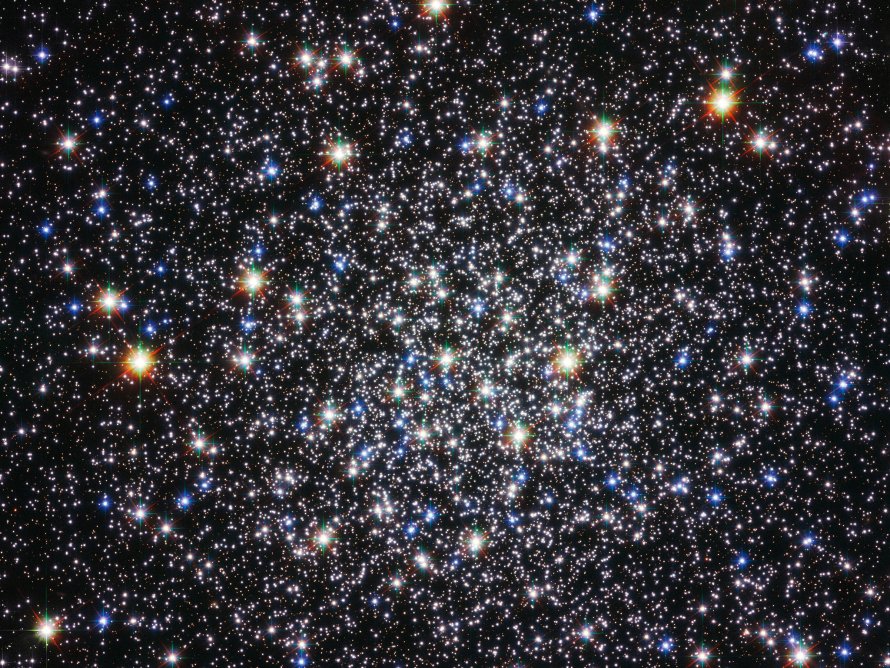M12 (NGC 6218) - Gumball Cluster
Messier 12 (NGC 6218), also known as the Gumball Cluster, is a globular cluster located in the constellation Ophiucus, in the Galactic Center of the Milky Way Galaxy in the Local Group of galaxies. M12 is 15700 light years away from Earth.
M12 is best viewed during mid-summer, is magnitude 7.7, and can be viewed with binoculars. M12 is 16' in apparent size. For reference, the full moon is 30'.
Observing difficulty: Intermediate
- Name:
- Gumball Cluster
- Type:
- globular cluster
- Constellation:
- Ophiucus
- NGC or IC:
- NGC 6218
- Magnitude:
- 7.7
- Viewing:
- binoculars
- Size:
- 16'
- Distance (light years):
- 15700 LY
- RA:
- 16h 47.2m
- Dec:
- -1 57'
- Season:
- mid-summer
- Milky Way location:
- Galactic Center
- Galaxy group:
- Local Group
- Messier Marathon #:
- 78
* The naked eye can see up to magnitude ~7-8 objects under ideal dark sky conditions.
A Journey Into a Celestial Gathering
For amateur astronomers and stargazers, Messier 12 (M12) offers a wonderful celestial sight and a compelling historical journey. Also known as the Gumball Globular Cluster, M12 is an easily accessible globular cluster, characterized by its somewhat loose concentration of ancient stars. In this article, we'll delve into the discovery, physical characteristics, and notable features of M12, as well as discuss its brightness, relative ease of location, and viewing tips.
Discovery and Observation
M12 was first cataloged by French astronomer Charles Messier in 1764. The globular cluster resides in the constellation Ophiuchus, which is visible in the summer months for most observers in the Northern Hemisphere. Located about 15,700 light-years away from Earth, M12 is observable even through small telescopes, appearing as a fuzzy patch of light against the dark backdrop of space.
Physical Characteristics and Magnitude
The apparent magnitude of M12 is about 6.7, making it just beyond the limit of naked-eye visibility under optimal dark-sky conditions. Nonetheless, this globular cluster is easily observable with binoculars or a small telescope, where it reveals its characteristic "gumball" appearance due to its somewhat loose, Class IX concentration of stars. Spanning about 75 light-years in diameter, M12 provides a broad field of view for amateur astronomers.
Stellar Composition
M12 is an ancient cluster, estimated to be around 12.67 billion years old. It comprises approximately 200,000 stars, mainly consisting of older, low-mass stars with low metallicity?a testament to the early universe's stellar composition. Although predominantly populated by red giants, M12 exhibits fewer blue stragglers than expected, presenting an interesting point of study.
The Missing Low-Mass Stars
One of M12's most intriguing features is its apparent deficiency of low-mass stars. Some astronomers theorize that gravitational interactions with the Milky Way's central bulge might have stripped M12 of these stars, thus offering an intriguing opportunity to study the dynamics of globular clusters and their interaction with our galaxy.
Finding and Viewing M12
Given its location in the constellation Ophiuchus, M12 can be found just north of the star Beta Ophiuchi. For amateur astronomers, a simple star hop from Beta Ophiuchi to 30 Ophiuchi leads directly to M12. Despite its modest brightness, M12 can be resolved into individual stars using a medium-sized telescope, offering a spectacular sight. Given its southerly declination, it is more easily visible from the Southern Hemisphere, though still accessible from most Northern Hemisphere locations during summer months.



